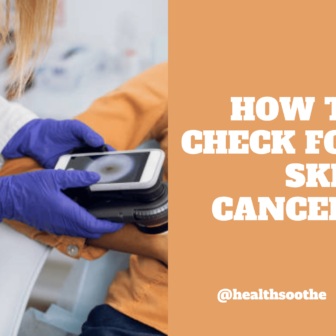In Scottsdale, we know how serious skin cancer is. It affects your health and how you feel. That’s why we offer top-notch skin cancer reconstruction services. We use the latest medical tech and care for each person.
Our team includes skilled dermatologists, plastic surgeons, and reconstructive experts. They work together to fix your skin and boost your confidence. If you’ve had Mohs surgery or need other treatments, we’re here to help.
Our modern facilities and advanced methods mean you get the best care. We tailor our services to meet your specific needs and goals.

Key Takeaways
- Comprehensive skin cancer reconstruction services in Scottsdale
- Personalized treatment plans for functional and aesthetic restoration
- Collaborative approach with experienced dermatologists and plastic surgeons
- State-of-the-art facilities and advanced reconstruction techniques
- Commitment to restoring both physical and emotional well-being
Understanding Skin Cancer and Reconstruction Needs
Skin cancer is a serious condition that affects many people. It comes in different types, each needing special treatment and reconstruction. We, as experts, know how crucial it is to tackle these issues. We aim to restore our patients’ health and beauty.
Types of Skin Cancer Requiring Reconstruction
Common skin cancers needing reconstruction are basal cell carcinoma, squamous cell carcinoma, and melanoma. Each type poses unique challenges. We use customized approaches to ensure the best results.
Impact on Facial Aesthetics and Function
Skin cancers in the face can greatly affect how we look and function. Tumors or scars can change the face’s shape, impacting the eyes, nose, and lips. Our team works hard to minimize these effects. We aim to restore a natural, harmonious look.
Early Detection and Treatment Benefits
Early detection and quick treatment are key to great results. Regular checks and quick diagnosis mean less invasive treatments. This leads to faster healing and better long-term results. We urge our patients to watch for any unusual skin changes and seek help right away.
| Skin Cancer Type | Reconstruction Considerations | Facial Aesthetics Impact |
|---|
| Basal Cell Carcinoma | Tissue rearrangement, skin grafts | Alterations to facial contours, scarring |
| Squamous Cell Carcinoma | Complex reconstructive techniques | Significant disruption to facial features |
| Melanoma | Comprehensive surgical planning | Potential for severe facial disfigurement |
“Early detection and prompt treatment of skin cancer are crucial for achieving the best possible results.”
Advanced Reconstruction Techniques in Scottsdale
In Scottsdale, our skin cancer reconstruction clinic offers the latest techniques. These help patients feel confident and live well after skin cancer treatment. Our team of plastic surgeons is skilled in flap surgery, skin grafts, and microsurgery. They work to restore both looks and function.
Flap surgery is a complex method. Our surgeons move healthy skin, muscle, and tissue from one body part to the affected area. This creates a natural and functional repair. Skin grafts involve transplanting healthy skin from another area to the surgery site. It blends well with the surrounding tissue.
For tough cases, we use microsurgery. This precise method lets our surgeons reconnect small blood vessels and nerves. It ensures the best healing and sensation. We’re also experts in scar revision to make scars less noticeable, improving the outcome.
“The advanced techniques we employ at our Scottsdale clinic have truly transformed the lives of our skin cancer patients. We’re dedicated to providing comprehensive, personalized care that restores both form and function.”
We combine these advanced methods with our top-notch facilities and team. This way, we achieve outstanding results for our patients. Book a consultation today to see how we can help you or a loved one recover.
Why Choose Skin Cancer Reconstruction Scottsdale
In Scottsdale, our state-of-the-art facilities offer top-notch care for skin cancer reconstruction. Our team of board-certified surgeons and medical experts focus on personalized treatment. They tailor each plan to meet the unique needs of our patients.
State-of-the-Art Facilities
Our accredited facilities have the latest in medical tech and surgical tools. This ensures safety and precision in every procedure. We use advanced imaging and surgical methods to achieve the best results for our patients.
Expert Medical Team
Our board-certified surgeons have a lot of experience in skin cancer reconstruction. They use their knowledge of facial anatomy to restore affected areas. This helps patients feel confident and live better lives.
Personalized Treatment Approaches
We know every patient’s journey with skin cancer is different. That’s why we offer customized care. Our team works with each patient to create a treatment plan that meets their needs. This ensures the best results and a smooth recovery.
For top care in skin cancer reconstruction, Scottsdale is the place to go. Trust our team to help you through this journey. We’ll help you regain your confidence and well-being.
Recovery and Healing Process After Reconstruction
Getting skin cancer reconstruction is a big step towards feeling confident again. But, the journey doesn’t stop there. Our team at Skin Cancer Reconstruction Scottsdale is here to help you through the recovery and healing process. We care about your well-being and want to support you every step of the way.
The time it takes to recover from skin cancer reconstruction surgery varies. It depends on the surgery’s complexity and how quickly you heal. Generally, it takes 2-4 weeks for the initial wound healing. During this time, we’ll watch your progress closely and give you personalized post-operative care instructions.
It’s important to follow our advice to help your wound heal well and avoid complications. This includes:
- Protecting the surgical site from sun exposure
- Keeping the area clean and properly bandaged
- Avoiding strenuous activities and allowing your body to rest and recover
- Attending scheduled follow-up appointments for wound assessment and management
As you move through the recovery timeline, you might feel some discomfort, swelling, or bruising. These are normal after surgery. Our team will help manage any post-operative care needs and keep you comfortable during healing.
By following our advice and staying in touch, you can look forward to a successful recovery. We’re here to support you from the first consultation to the end of wound healing.
| Recovery Timeline | Typical Healing Milestones |
|---|
| 2-4 weeks | Initial wound healing and post-operative care |
| 4-8 weeks | Gradual reduction in swelling and bruising |
| 3-6 months | Full recovery and restoration of skin’s appearance and function |
Remember, everyone heals differently. Our team will work with you to make sure your recovery goes smoothly and meets your needs.

Post-Operative Care and Long-Term Results
After your skin cancer surgery, it’s key to follow the right care steps for the best results. Our team will guide you on wound care, managing scars, and the need for follow-up visits. These steps help track your healing and progress.
Following Post-Surgery Instructions
It’s important to stick to the post-op instructions from our team. This includes how to change dressings, apply ointments, and avoid sun exposure on the surgical area. Following these steps helps your healing and lowers the chance of problems.
Monitoring Progress and Healing
Regular check-ups are crucial in your recovery. Our experts will check on your healing, look at how your skin and function are doing, and adjust your plan if needed. These visits help us tackle any issues and make sure you’re recovering well.
Long-Term Care Guidelines
Keeping your skin cancer reconstruction looking good needs ongoing care. We’ll give you tips on scar management, sun protection, and the need for follow-up appointments to keep an eye on your skin. By following these tips, you can keep your skin looking great and lower the risk of more skin cancer.
| Post-Operative Care Recommendations | Long-Term Care Guidelines |
|---|
- Proper wound care
- Scar management techniques
- Protective dressings or coverings
| - Regularly scheduled skin checks
- Diligent sun protection
- Ongoing scar maintenance
|
By sticking to our detailed care plans, you can make sure your skin cancer reconstruction is a success. Our team is here to support you from start to finish, helping you keep your results looking great.
Insurance Coverage and Financial Considerations
At our Scottsdale practice, we know how worried you might be about the cost of skin cancer reconstruction. We’re here to help you understand your health insurance and financing options.
Most health plans cover some of the costs for skin cancer reconstruction. But, how much they cover can differ a lot. Our team will help you figure out what your insurance will pay for and how to get the most from it.
If you’re worried about the cost, we have flexible financing options. You can choose from payment plans, medical credit cards, or work with our partners. We want to make sure money doesn’t stop you from getting the care you need.
| Health Insurance Coverage | Financing Options |
|---|
- Most major health plans cover some level of skin cancer reconstruction
- Coverage can vary based on individual plan details
- Our team will help you understand and maximize your insurance benefits
| - Payment plans tailored to your budget
- Medical credit cards with flexible terms
- Partnerships with reputable financing providers
|
We want to ease your financial worries so you can focus on healing. Let us help you navigate the complexities of health insurance and financing options so you can get the care you need.
Patient Success Stories and Before/After Results
We are proud of the success we’ve seen in our patients after skin cancer reconstruction. Our team uses the latest techniques and cares for each patient personally. This approach has changed lives for many people affected by skin cancer.
Real Patient Testimonials
Our patients’ stories show how our services can change lives. Sarah, for example, was self-conscious after a skin cancer diagnosis. She said, “The team at this clinic truly listened to my concerns and worked tirelessly to restore my confidence. Now, I can enjoy my daily life without worrying about my scars.”
Michael also shared his gratitude. He said, “The before and after photos of my reconstruction are remarkable. I never imagined I could look and feel this good after such a challenging experience.”
Transformation Gallery
Check out our transformation gallery to see our work. It has before and after photos of patients with different skin cancer reconstruction needs.
These photos show our skill in addressing various challenges. We use advanced techniques and a personalized approach. This helps our patients regain their confidence and quality of life.
“The team at this clinic truly listened to my concerns and worked tirelessly to restore my confidence. I’m now able to enjoy my daily life without worrying about the visible scars from my surgery.”
We are dedicated to giving our patients the best care and results. If you or a loved one is dealing with skin cancer, look at our success stories and photos. See how we can help.
Conclusion
At our skin cancer reconstruction center in Scottsdale, we focus on expert care and advanced techniques. We also offer personalized treatment plans. Our goal is to help our patients get the best results.
We stress the importance of catching skin cancer early and treating it effectively. We also work on rebuilding the affected areas. This helps restore both how they look and how they function.
Our team uses the latest facilities and has a lot of experience. We create customized treatment plans for each patient. This way, we aim to exceed our patients’ expectations.
If you’ve been diagnosed with skin cancer or need help with treatment effects, we’re here for you. We’ll support you every step of the way.
We invite you to book a consultation with our team. Learn more about our skin cancer reconstruction services in Scottsdale. Our experts will create a plan just for you, addressing your specific needs and concerns.
With our care and support, you can regain your confidence and improve your quality of life. Let’s work together to achieve that.
FAQ
What is the difference between basal cell carcinoma, squamous cell carcinoma, and melanoma?
Basal cell carcinoma is the most common skin cancer. It looks like a pearly or waxy bump. Squamous cell carcinoma is a firm, red nodule or flat lesion with a scaly surface. Melanoma is the most serious, coming from pigment-producing cells called melanocytes.
How does skin cancer affect facial aesthetics and function?
Skin cancer can change how your face looks and works. It can distort facial features, cause scarring, and even lead to tissue loss. This can make it hard to express emotions, eat, speak, or see. Quick treatment and reconstruction are key to fixing both looks and function.
What are the benefits of early detection and treatment for skin cancer?
Catching skin cancer early is very important. Early treatment can keep your appearance and function mostly intact. But, if ignored, it can grow and cause more harm, needing complex fixes. We recommend regular skin checks and quick action for any suspicious spots.
What advanced reconstruction techniques are available in Scottsdale?
In Scottsdale, we use the latest techniques for skin cancer reconstruction. This includes flap surgery, skin grafts, and microsurgery. These methods help restore your face’s look and function.
Why should I choose Scottsdale for my skin cancer reconstruction?
Scottsdale offers top-notch facilities and a skilled team for your reconstruction. We tailor each treatment to fit your needs and goals. Our advanced methods and dedication to excellence mean you’re in good hands.
What can I expect during the recovery and healing process?
Recovery time varies based on the procedure. We guide you through the healing process, including wound care and managing discomfort. Our team will check on your progress and help with any concerns.
How do I care for my skin and maintain the results long-term?
Keeping your results means following our post-surgery advice and attending follow-ups. We’ll give you tips on scar management and skin protection. This helps keep your results and prevents future skin cancer.
How does insurance coverage and financing work for skin cancer reconstruction?
We know skin cancer reconstruction can be costly. Many insurance plans cover necessary surgery. We’ll help you with the insurance and financing to make sure you get the care you need.
Where can I find examples of successful skin cancer reconstruction outcomes?
We’re proud to share our before-and-after photos and patient stories. These show the amazing results we’ve achieved. They range from improving facial looks to restoring function. Explore these to see what we aim for.













